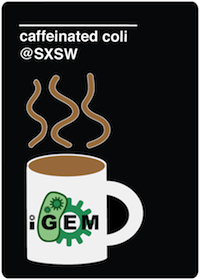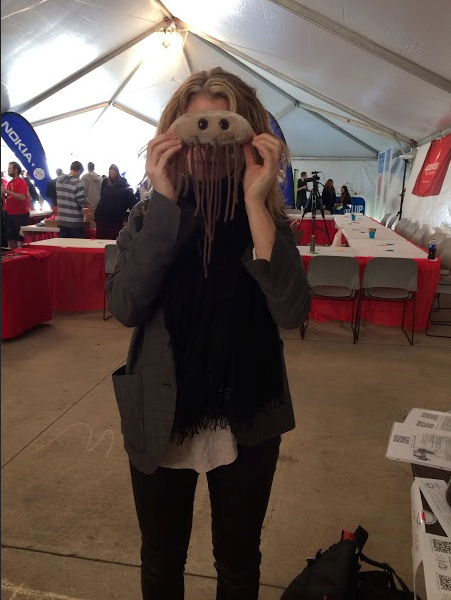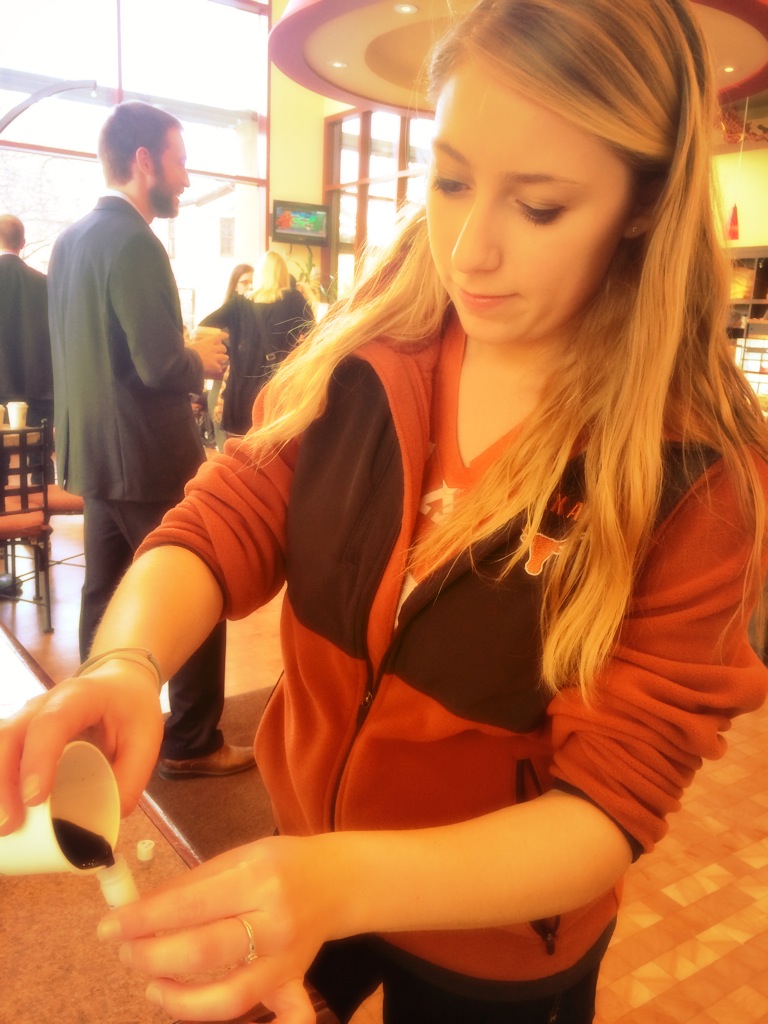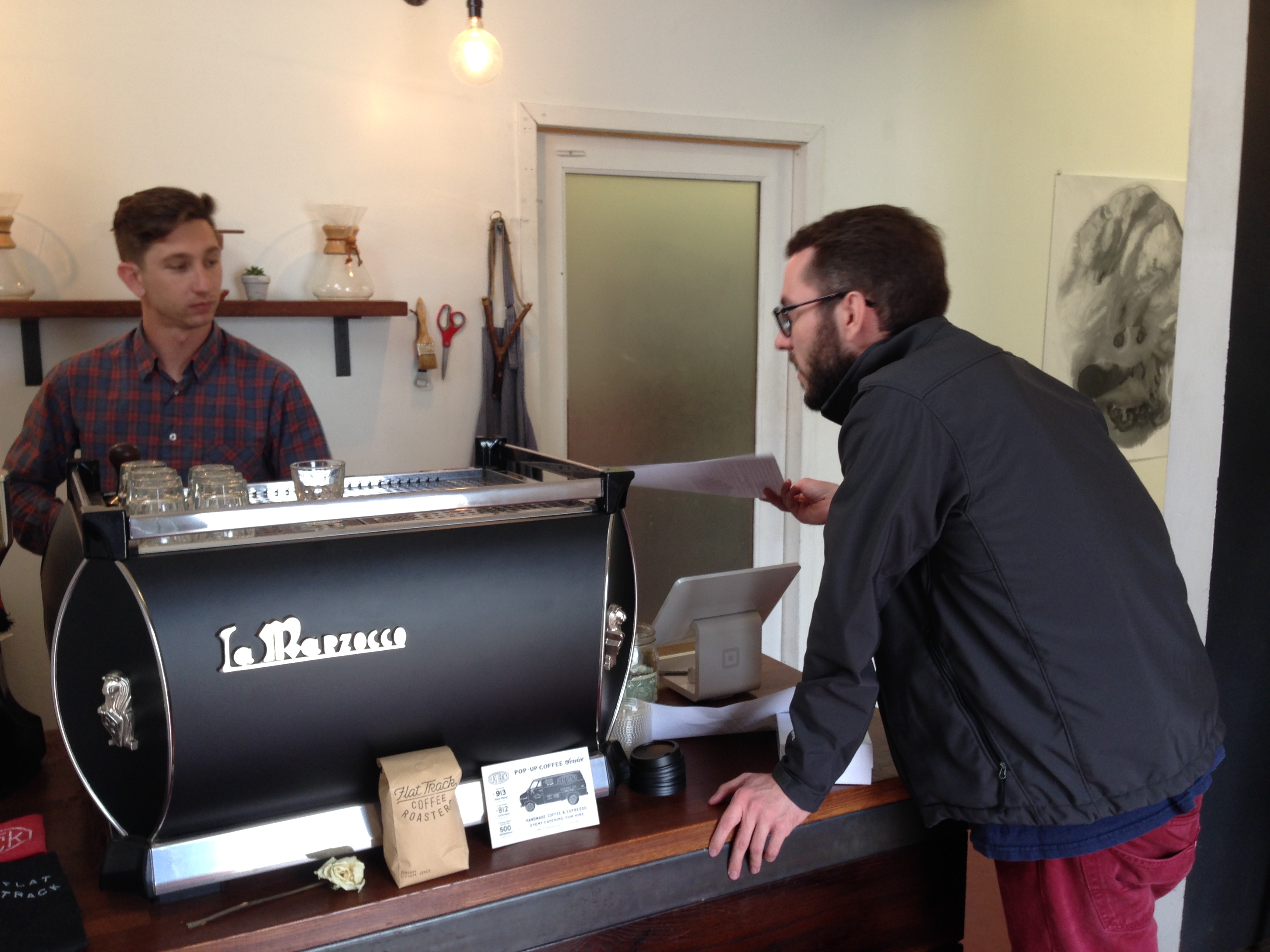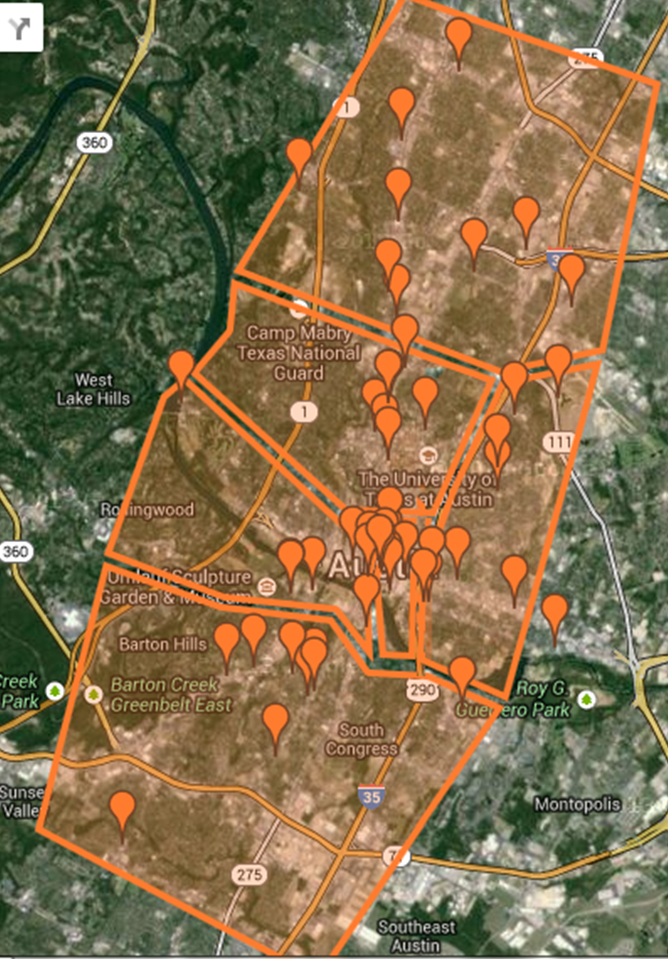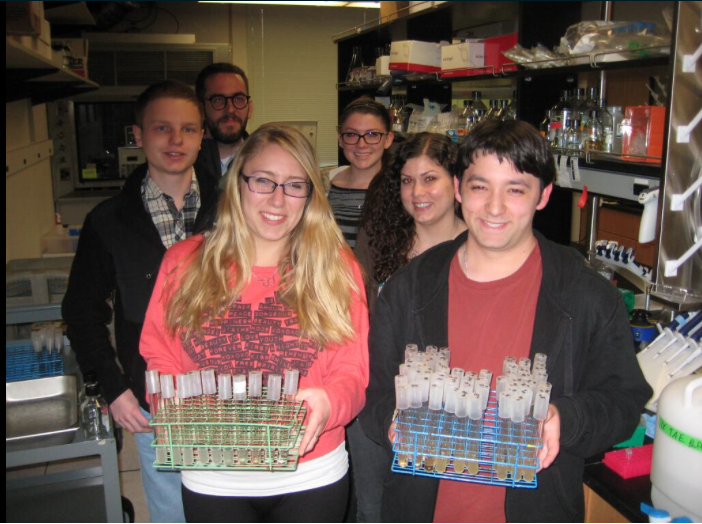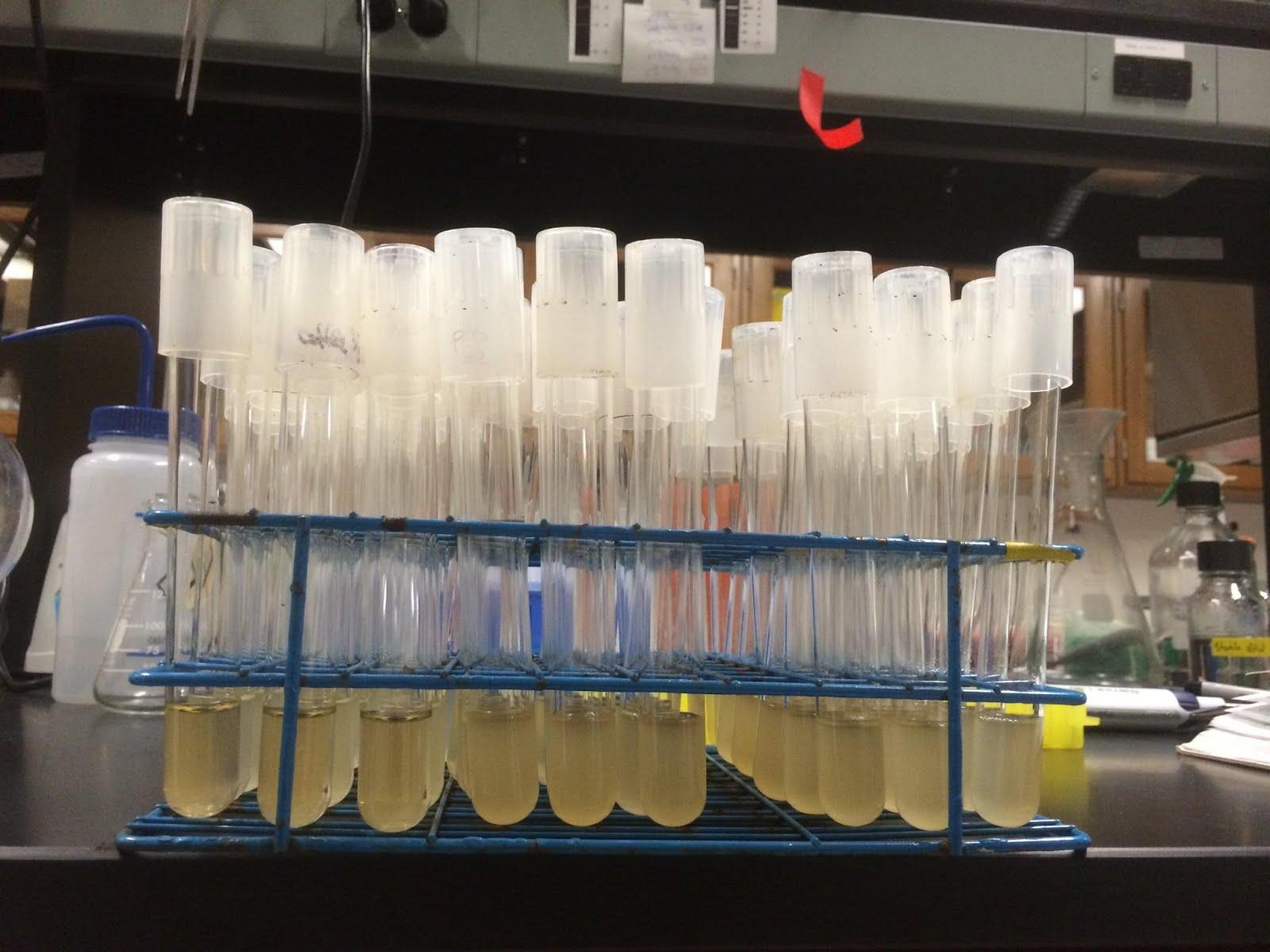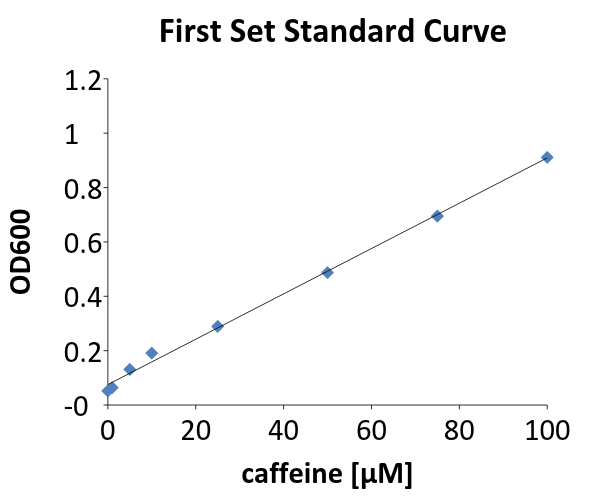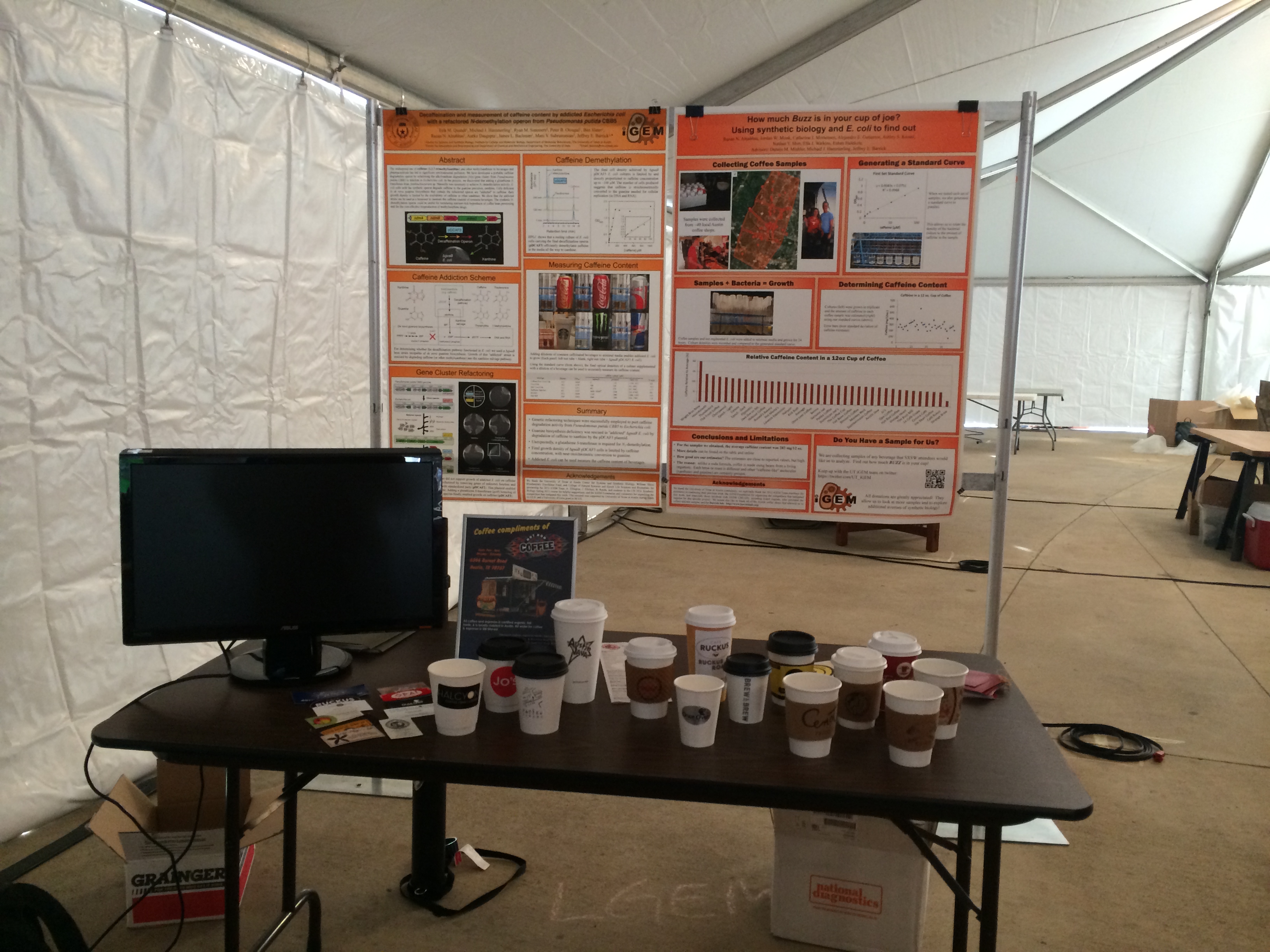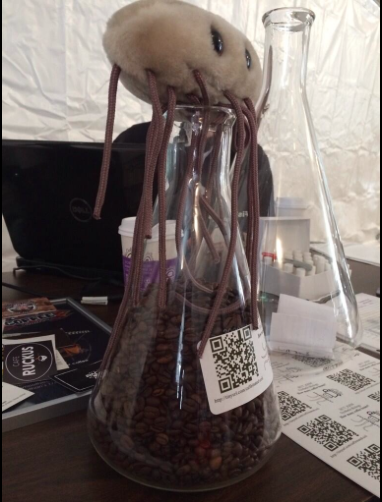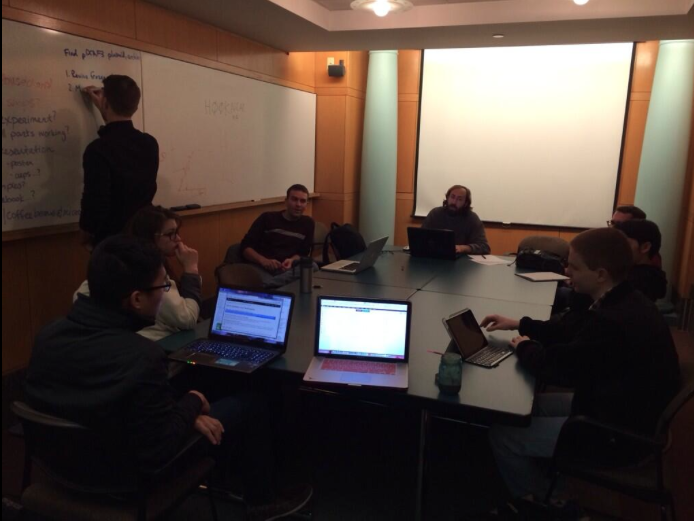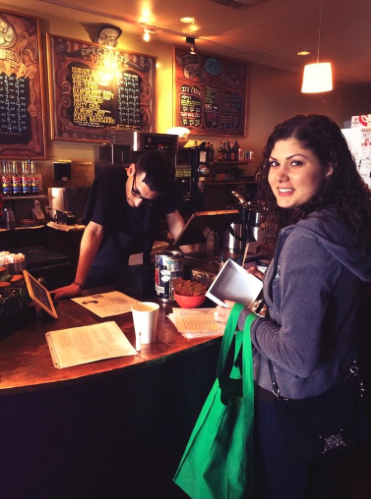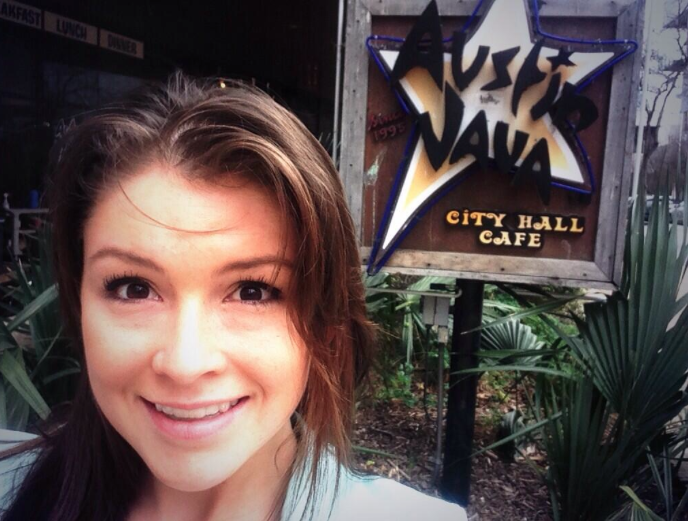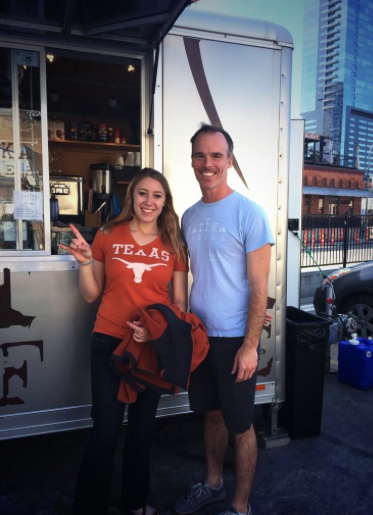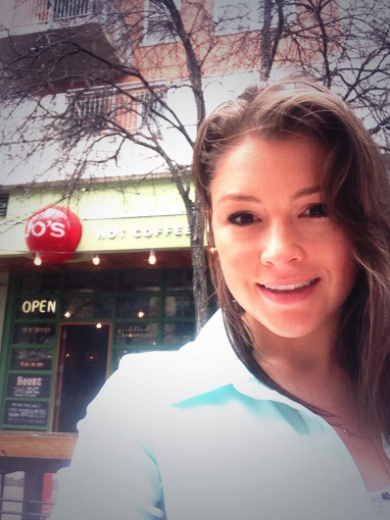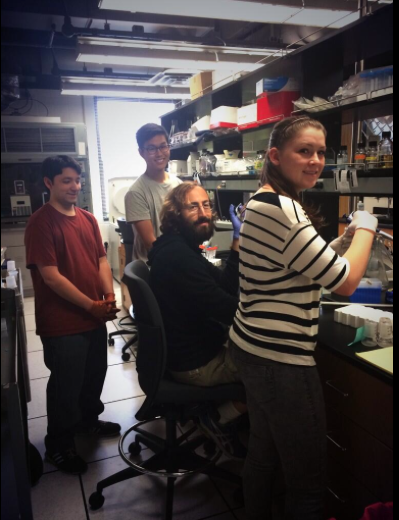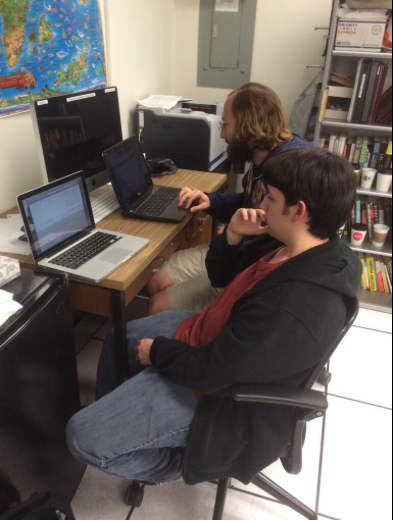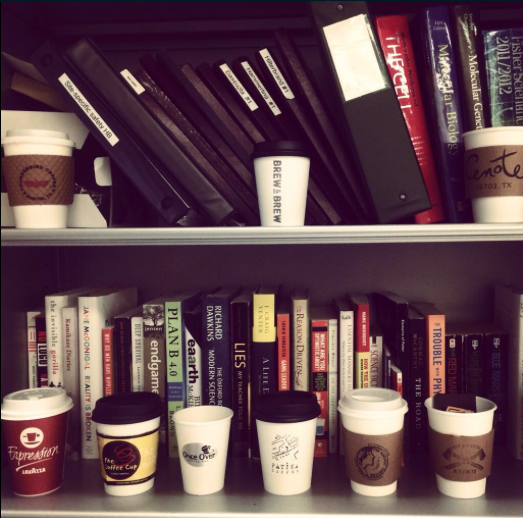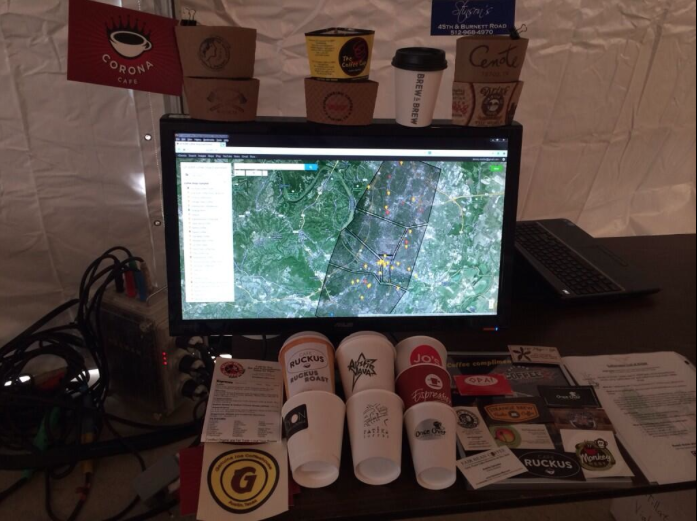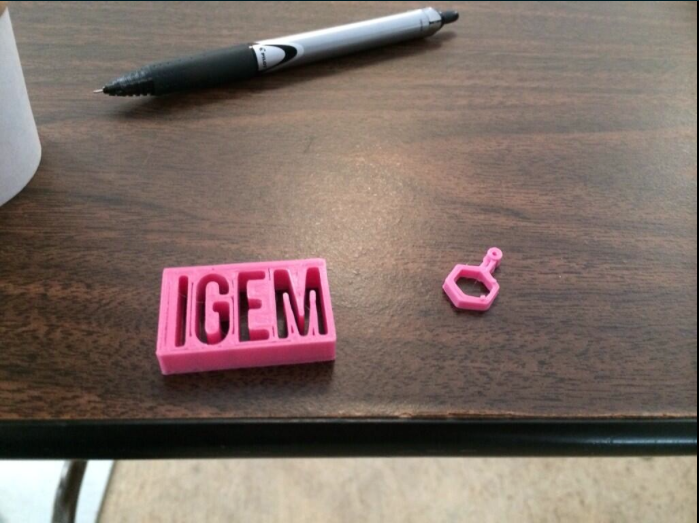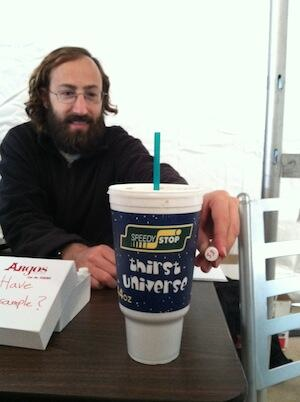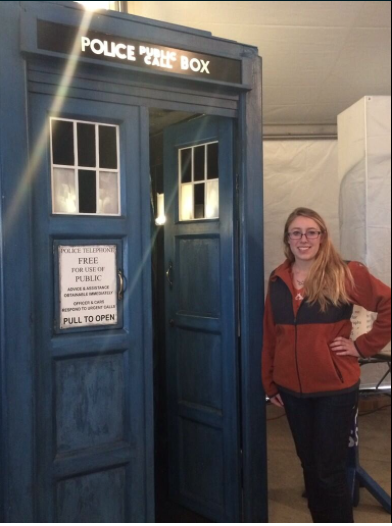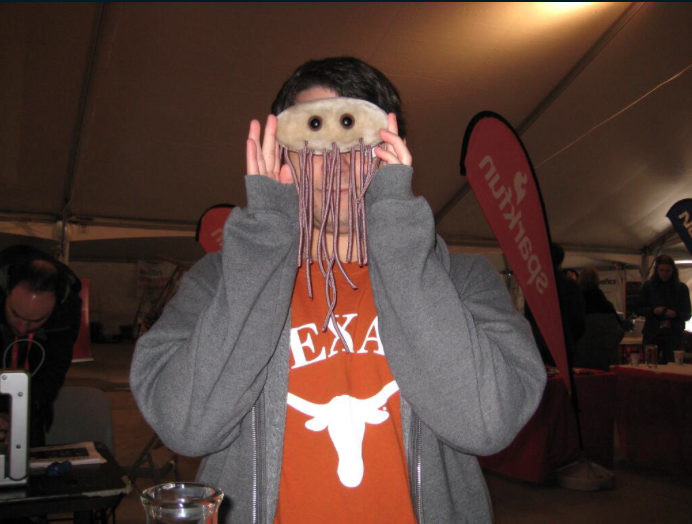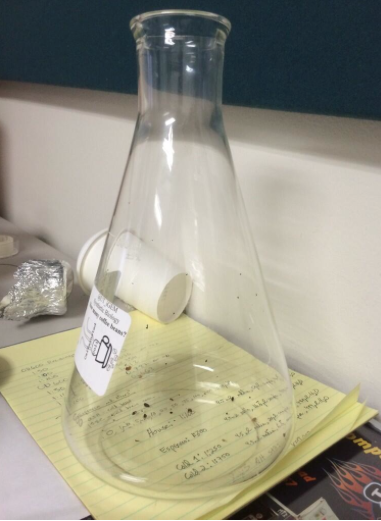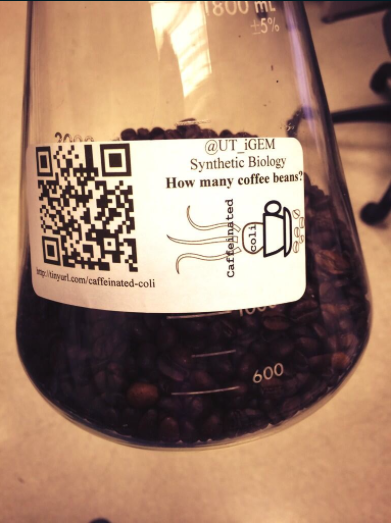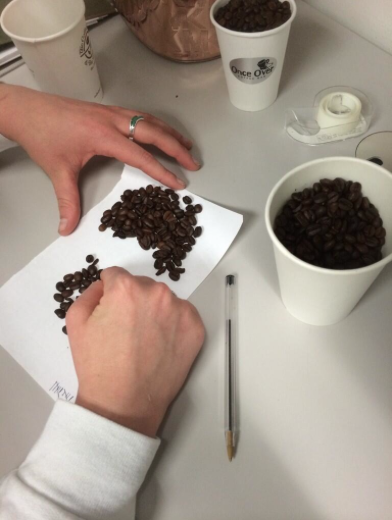Team:Austin Texas/human practices
From 2014.igem.org
(→Community Response) |
|||
| (8 intermediate revisions not shown) | |||
| Line 79: | Line 79: | ||
| - | + | <div align="justify"> | |
<h1>Outreach at South by Southwest (SXSW)</h1> | <h1>Outreach at South by Southwest (SXSW)</h1> | ||
[[file:Ingram.JPG|thumb|left|200px| Special thanks to [https://twitter.com/krening Karen Ingram] for giving us this amazing opportunity to participate at SXSW Create 2014!]] | [[file:Ingram.JPG|thumb|left|200px| Special thanks to [https://twitter.com/krening Karen Ingram] for giving us this amazing opportunity to participate at SXSW Create 2014!]] | ||
[[file:Ellacollectscoffee.JPG|thumb|right|200px| Ella collecting a coffee sample from Austin Java.]] | [[file:Ellacollectscoffee.JPG|thumb|right|200px| Ella collecting a coffee sample from Austin Java.]] | ||
| - | In the spring of 2014, [http://www.kareningram.com Karen Ingram] invited the UT Austin iGEM team to present at [http://sxsw.com/exhibitions/sxsw-create/participants-2014 South by Southwest (SXSW) 2014 Create]. The SXSW festival is an annual set of music, film and interactive events in Austin. The Create event was an interactive event that showcases up and coming maker/hacker/DIY culture. There were a few new team members, so we saw this as an opportunity to not only teach the new members essential research techniques, but also to reach out to the community and raise awareness for the emerging field of synthetic biology. We decided to revive a previous iGEM project, [https://2012.igem.org/Team:Austin_Texas/Caffeinated_coli "Caffeinated Coli,"] and thought it would be interesting to measure the caffeine content of various different local house coffees. Such a project would give us a platform to engage the wider community on the topic of synthetic biology, and hopefully serve to better inform people about the potential benefits of synthetic biology and its applications. We were very happy with the feedback we received. | + | In the spring of 2014, [http://www.kareningram.com Karen Ingram] invited the UT Austin iGEM team to present at [http://sxsw.com/exhibitions/sxsw-create/participants-2014 South by Southwest (SXSW) 2014 Create]. The SXSW festival is an annual set of music, film, and interactive events in Austin. The Create event was an interactive event that showcases up-and-coming maker/hacker/DIY culture. There were a few new team members, so we saw this as an opportunity to not only teach the new members essential research techniques, but also to reach out to the community and raise awareness for the emerging field of synthetic biology. We decided to revive a previous iGEM project, [https://2012.igem.org/Team:Austin_Texas/Caffeinated_coli "Caffeinated Coli,"] and thought it would be interesting to measure the caffeine content of various different local house coffees. Such a project would give us a platform to engage the wider community on the topic of synthetic biology, and hopefully serve to better inform people about the potential benefits of synthetic biology and its applications. We were very happy with the feedback we received. |
| Line 112: | Line 112: | ||
[[file:teamcoffee.png|400px|thumb|center|The beginning of something great! Special thanks to Razan Alnahhas (second row, right) for mentoring and to Mike Hammerling (not pictured) and Ashley Kessel (second row, left) for assistance in sample collection.]] | [[file:teamcoffee.png|400px|thumb|center|The beginning of something great! Special thanks to Razan Alnahhas (second row, right) for mentoring and to Mike Hammerling (not pictured) and Ashley Kessel (second row, left) for assistance in sample collection.]] | ||
| - | + | <h1>Doing the Science</h1> | |
[[file:UT_Austin_E._coli_coffee_cultures.jpg|250px|thumb|left| Cultures of knockout strain grown with collected coffee samples.]] | [[file:UT_Austin_E._coli_coffee_cultures.jpg|250px|thumb|left| Cultures of knockout strain grown with collected coffee samples.]] | ||
| Line 120: | Line 120: | ||
| - | + | <h2>Measuring Caffeine Content</h2> | |
The protocol was simple: we provided our caffeinated coli with a diluted sample of coffee we had acquired from the various shops, and then compared the relative growth of each culture by measuring the absorbance at 600 nm (OD<sub>600</sub>). The simplicity of the project was the key to its success. It provided a glimpse into the exciting new world of synthetic biology for the new members and allowed them to learn vital skills that were used in day to day research during the summer. | The protocol was simple: we provided our caffeinated coli with a diluted sample of coffee we had acquired from the various shops, and then compared the relative growth of each culture by measuring the absorbance at 600 nm (OD<sub>600</sub>). The simplicity of the project was the key to its success. It provided a glimpse into the exciting new world of synthetic biology for the new members and allowed them to learn vital skills that were used in day to day research during the summer. | ||
| - | Our results can be seen in Figure 1, below. | + | Our results can be seen in ''Figure 1'', below. |
| - | [[file:UT_Austin_relative_caffeine_levels_coffee_shops.png| | + | [[file:UT_Austin_relative_caffeine_levels_coffee_shops.png|950px|thumb|center| '''Figure 1.''' Relative levels of caffeine in house coffee samples from around Austin. Data depict the amount of caffeine in the coffee relative to the average caffeine content for all samples tested, as determined using the Caffeinated Coli.]] |
| - | + | <h1>Presenting the Science</h1> | |
| - | In March 2014, we presented this data set at the SXSW festival. As part of this outreach, we explained our project and synthetic biology to a wide range of people. Many people who came by had little to no background in science or technology, and those who did did not have a thorough understanding of what synthetic biology was or how it could be helpful. By discussing our experiments with bacteria and coffee, an interesting and easy to understand application, we were able to explain the basic concepts of synthetic biology and how it can be used in a beneficial way. Occasionally, these conversations would branch out into wider topics of science and technology. We feel this is a far better way for the public to learn about synthetic biology than from rumors about GMOs. | + | In March 2014, we presented this data set at the SXSW festival. As part of this outreach, we explained our project and synthetic biology to a wide range of people. Many people who came by had little to no background in science or technology, and those who did did not have a thorough understanding of what synthetic biology was or how it could be helpful. By discussing our experiments with bacteria and coffee, an interesting and easy-to-understand application, we were able to explain the basic concepts of synthetic biology and how it can be used in a beneficial way. Occasionally, these conversations would branch out into wider topics of science and technology. We feel this is a far better way for the public to learn about synthetic biology than from rumors about GMOs. |
| - | + | <h2>Community Response</h2> | |
[[file:SXSWcreatetable.JPG|left|400px|thumb| Table at SXSW]] | [[file:SXSWcreatetable.JPG|left|400px|thumb| Table at SXSW]] | ||
| Line 142: | Line 142: | ||
| - | [[file:e.coliplush.png|thumb|right| Coffee bean counting contest]] | + | [[file:e.coliplush.png|thumb|250px|right| Coffee bean counting contest]] |
People were also extremely curious as to why the Wright Bros. Brew & Brew sample had a significantly higher amount of caffeine. This data point resulted in one of the owners of Wright Bros. Brew & Brew contacting us to understand our process of determining caffeine content and why they were so far outside the mean. The owner, Matt Wright, concluded, after discussing our project and the coffee brewing process (and consulting with employees), that the specific pot of coffee was probably just not fully drained, i.e. there was less water in the batch than normal, resulting in a higher caffeine per volume content. This was just a starting point though, as the conversation with Mr. Wright spanned the entire process of making coffee, quality control, and a little bit of the science behind the process. It also developed a nice contact point for a future continuation of science and coffee. | People were also extremely curious as to why the Wright Bros. Brew & Brew sample had a significantly higher amount of caffeine. This data point resulted in one of the owners of Wright Bros. Brew & Brew contacting us to understand our process of determining caffeine content and why they were so far outside the mean. The owner, Matt Wright, concluded, after discussing our project and the coffee brewing process (and consulting with employees), that the specific pot of coffee was probably just not fully drained, i.e. there was less water in the batch than normal, resulting in a higher caffeine per volume content. This was just a starting point though, as the conversation with Mr. Wright spanned the entire process of making coffee, quality control, and a little bit of the science behind the process. It also developed a nice contact point for a future continuation of science and coffee. | ||
| Line 148: | Line 148: | ||
Similar conversations involving science, synthetic biology, coffee, and the community occurred throughout the entire SXSW event. The various coffee shop owners and baristas were curious if they could employ science to help them make a better drink or a more customizable product. Some of the SXSW attendees were in the coffee making business and were interested in thinking about whether such science could be used to understand where the caffeine goes during each step in the coffee-making process. | Similar conversations involving science, synthetic biology, coffee, and the community occurred throughout the entire SXSW event. The various coffee shop owners and baristas were curious if they could employ science to help them make a better drink or a more customizable product. Some of the SXSW attendees were in the coffee making business and were interested in thinking about whether such science could be used to understand where the caffeine goes during each step in the coffee-making process. | ||
| - | Additionally, a number of individuals who home brew coffee | + | '''Additionally, a number of individuals who home brew coffee or kombucha or other organic drinks, such as tea, wondered if this technology could be used to cheaply and quickly test their samples to determine the amount of caffeine they have in their home brews. We, of course, said yes!''' |
| - | To involve everyone attending the event and raise more awareness for the iGEM team, we held a contest in which patrons attending the event could enter to win an ''E. coli'' plush upon following us on [https://twitter.com/UT_iGEM Twitter | + | To involve everyone attending the event and raise more awareness for the iGEM team, we held a contest in which patrons attending the event could enter to win an ''E. coli'' plush upon following us on [https://twitter.com/UT_iGEM Twitter]. |
| - | + | <h2>Impact on Synthetic Biology</h2> | |
This community outreach project presented the team with an opportunity to dispel misoconceptions the public has about the field of syntetic biology and our work with genetically modified organisms. We worked to show people the benefits of GMOs, such as the application our caffeinated coli, which were originally created in 2012 with bioremediation in mind. By presenting the science in a fun and easily digestible manner, members of the general public could see synthetic biology in a new light. | This community outreach project presented the team with an opportunity to dispel misoconceptions the public has about the field of syntetic biology and our work with genetically modified organisms. We worked to show people the benefits of GMOs, such as the application our caffeinated coli, which were originally created in 2012 with bioremediation in mind. By presenting the science in a fun and easily digestible manner, members of the general public could see synthetic biology in a new light. | ||
| - | + | The challenge of accurately detecting caffeine in biological products is fascinating, and we hope to further refine our methods in the future, as we cannot currently fully differentiate between caffeine and certain other xanthines. Hopefully, we will be able to reach out again next year and develop an even better synthetic biology application. | |
| + | |||
| + | <h2>SXSW Adventure in Photographs (hover over image for captions!)</h2> | ||
[[file:Firstthinktanksession.png|left| 400px| First Think Tank Session!]] | [[file:Firstthinktanksession.png|left| 400px| First Think Tank Session!]] | ||
[[file: razancollectscoffee.png|right|400px|Razan collects coffee]] | [[file: razancollectscoffee.png|right|400px|Razan collects coffee]] | ||
| Line 170: | Line 172: | ||
[[file:Dr.WhoElla.png|right|400px| Any Whovians out there? SXSW had a Tardis!]] | [[file:Dr.WhoElla.png|right|400px| Any Whovians out there? SXSW had a Tardis!]] | ||
[[file:Alexgameface.png|left|400px| Alex has got his game face on!]] | [[file:Alexgameface.png|left|400px| Alex has got his game face on!]] | ||
| - | + | [[file: allcountedcoffebeans.png|right|300px| All done!]] | |
| - | + | ||
[[file:coffeebeancounting1.png|left|300px| Coffee bean counting begins for the winner of the plush ''E. coli''!]] | [[file:coffeebeancounting1.png|left|300px| Coffee bean counting begins for the winner of the plush ''E. coli''!]] | ||
| - | [[file:coffeebeancounting2.png| | + | [[file:coffeebeancounting2.png|left|345px| Just keep counting, just keep counting, just keep counting, counting counting]] |
| - | + | ||
| + | </div> | ||
Latest revision as of 01:13, 18 October 2014
| |||||||||||||||||||||||||||||
 "
"

